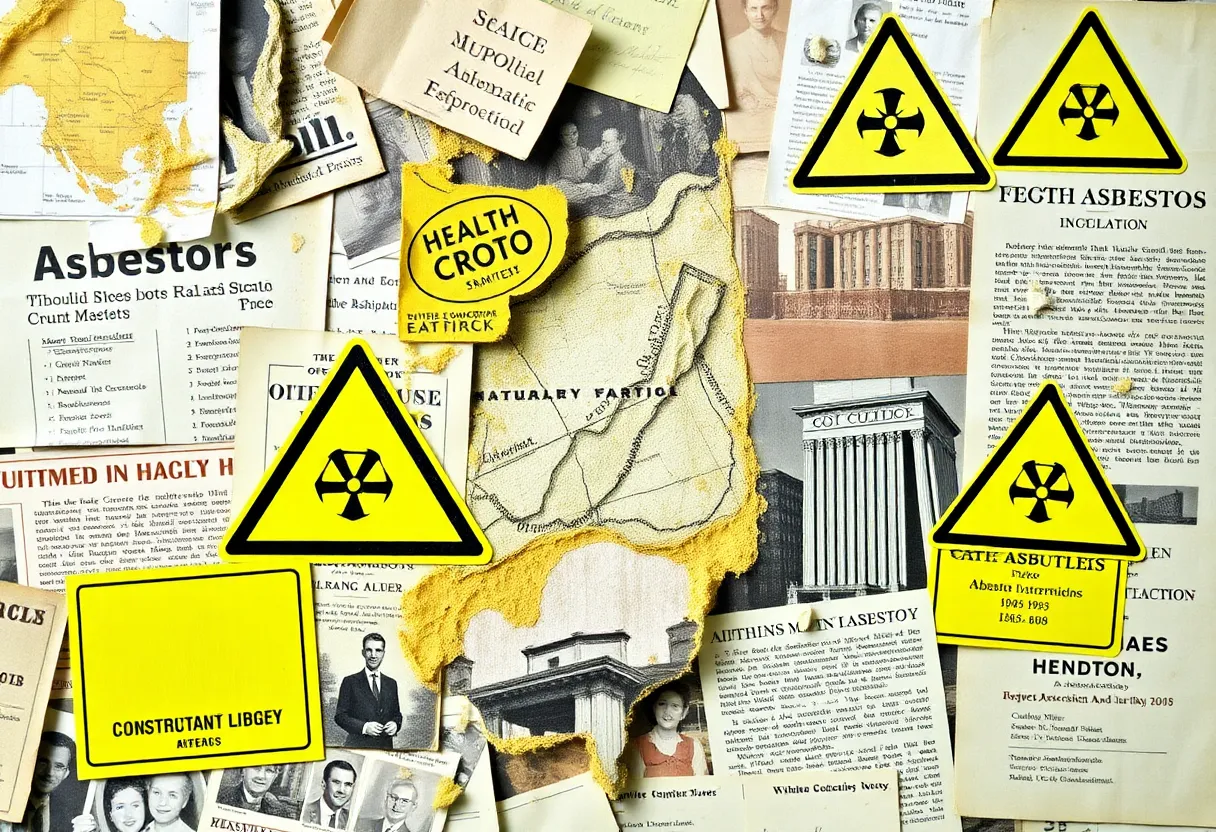News Summary
Asbestos remains a critical health issue in the U.S., with ongoing usage despite known carcinogenic effects, leading to demands for stricter regulations.
The Ongoing Battle Against Asbestos: A Toxic Legacy in the U.S.
Asbestos, known as the *magic mineral* for much of the 20th century, has been a silent yet deadly presence in American society. Despite widespread recognition of its carcinogenic effects, this toxic substance is still in use today, leading to ongoing health crises that could have been prevented with earlier regulatory actions.
Efforts to curtail asbestos use have been underway for decades, yet they face stiff opposition from several industries that rely on its unique properties. Used predominantly in roofing materials, *automotive parts*, and during industrial chlorine production, asbestos was once hailed for its fire-resistant qualities. However, since the 1960s, extensive research has linked asbestos exposure to a range of severe health issues, including various forms of cancer such as mesothelioma, lung, pleura, stomach, colon, and rectal cancers. The evidence is irrefutable: there is no safe level of asbestos exposure.
A Historical Overview of Asbestos Regulation
The significance of asbestos as a health hazard was recognized as early as 1898, when British factory inspector Lucy Deane first voiced concerns. By 1927, the term asbestosis was coined to describe the lung disease directly associated with asbestos exposure, later confirmed through a 1960 study that found a causal link between asbestos and pulmonary carcinoma.
Following a medical awakening regarding the hazards of asbestos, the U.S. implemented bans beginning in the 1970s. However, many mistakenly believed that asbestos was entirely outlawed due to actions taken against its presence in schools and hospitals. In reality, as of 2020, the U.S. remained one of the few industrialized nations not to have fully banned all forms of asbestos, joining a group of over 60 countries in phased bans.
Recent Developments and Future Concerns
In March 2024, the U.S. Environmental Protection Agency (EPA) is set to announce a substantial ban on ongoing uses of asbestos, specifically targeting the importation and utilization of chrysotile asbestos, the sole form still brought into the country. Industries using this type of asbestos—commonly found in vehicle brakes and vital chlorine production—will be provided with a 12-year timeframe to phase out its use. Yet, experts remain wary. There are fears that industries might pivot to other less-regulated forms of asbestos not covered by this impending ban.
Despite the comprehensive framework that is gradually taking shape, the *asbestos crisis* continues. The damage has already been severe, with the Institute for Health Metrics and Evaluation estimating that over 40,764 worker deaths in the U.S. were attributed to asbestos exposure in 2019 alone. Furthermore, the Centers for Disease Control and Prevention (CDC) recorded a staggering 45,221 mesothelioma deaths in the U.S. from 1999 to 2015. Historically, it is estimated that around 17 million occupational deaths in the 20th century resulted directly from asbestos exposure.
The Challenge of Old Buildings
Another significant concern arises from older buildings, particularly those constructed before 1970. Although the use of asbestos has diminished, these structures can still present hazards if they contain materials made from asbestos. Experts recommend that homeowners conduct professional surveys to identify potential asbestos and undertake remediation to mitigate risks associated with exposure.
Emergency situations, particularly natural disasters, can exacerbate the risk of asbestos exposure. The World Trade Center disaster, for example, serves as a stark reminder of how swiftly exposure can occur, not only for first responders but for the general public as well.
The Call for Comprehensive Federal Legislation
Advocates for public health are vocalizing their demand for comprehensive federal legislation to fully ban all forms of asbestos. Past attempts at regulation have been hindered by industry pushback, suggesting that without a robust legal framework, future bans could face similar challenges. The goal is clear: to prevent further legal battles surrounding any bans and to protect future generations from the relentless threat of asbestos exposure.
As the situation unfolds, the narrative of asbestos remains a cautionary tale—a toxic legacy that society must confront to protect both current and future generations from its unyielding grasp.
Deeper Dive: News & Info About This Topic
HERE Resources
Asbestos Discovery Sparks Safety Concerns at Virginia Elementary School
Innovative Asbestos Recycling Could Transform Waste Management
How to Support a Loved One with Mesothelioma
Urgent Call to Action: Mesothelioma Research at Risk!
Game-Changer for Cancer Survivors: Pickleball at Moffitt Cancer Center
Rising Awareness of Mesothelioma Risks for Auto-Truck Mechanics in Florida
Approval Granted for Replacement of Asbestos-Laden Industrial Unit in Reading
The Ongoing Struggle with Asbestos-Related Diagnoses
Obsequio Group Expands Asbestos Compliance Services
Community Shock as Local Man Dies from Asbestos Illness



















